How I Annotate My Books, Part 2
Who knew there'd be enough detail to warrant a Part 2?! This time includes peeks inside the books, too.
** Note: This post may be too long for email; you can read it in its entirety via your web browser or the Substack app. Also, want to talk about and see some of my annotating via video chat? We can discuss this - plus excellent books - in our upcoming Q1 Zoom call for the Reading And Purpose Nonfiction Book Club, an added benefit for all paid subscribers. You’re welcome to upgrade your subscription and join us! **
Last month, I posted a fairly in-depth article sharing how I annotate my books. My delights in life often veer toward the nerdy, so when I hit ‘publish’ on that article, I wasn’t sure if it would resonate with many other people.
Fortunately, it seems a number of you here in our Reading And Purpose community share similar delights! I’ve loved hearing your thoughts and learning how you annotate as well.
I’ve received some excellent questions since sharing that article. I also realized that although I included numerous photos, I didn’t show the inside of my books - what my annotating looks like ‘in action.’ Those are the items I’m here to chat about today. Like the previous article, my examples will include primarily nonfiction books, but most (all?) of this can be transferred to other types of reading as well.
(You can find that previous article here: How I Annotate My Books. I recommend taking a peek if you’d like more details on the purpose behind annotating, my favorite tools, and more.)
Proceed if you’re ready to delve even deeper into the wonderful world of annotating!
Page Marking
My earlier article mentioned page flags and sticky notes, which ultimately form the foundation of my annotating system. In the photo above, you can see the exterior view; I’ll show you some close-up examples of what my page flags denote inside in just a moment.
On a related and super-detailed note, the flags used in Quiet (middle book pictured above) are made of paper, the only type of page flag I was aware of back in 2012 when I purchased and read this book. If you look closely, you can see how bent and misshapen they’ve become over the years. Not a huge deal, but nowadays I definitely prefer the page flags made with a more sturdy material. Not only do they keep their shape well over time, they also don’t tend to bend or tear like the paper ones often do, making them useful to keep in a book I own long-term or to use over and over again in the case of borrowed books. Totally a personal preference issue, though.
Removable Notes
I know this can be a controversial opinion, but I have no problem writing and highlighting in my books, as long as I own them. Borrowed books, either from the library or a friend, are a completely different story. I would not write in a book that doesn’t belong to me, yet I still may wish to note key points while reading without completely pulling myself out of the book.
My solution is often to write directly on my page flags, as pictured in the above photo. (Side note: The book pictured here, Real Self-Care by Pooja Lakshmin, will help prompt some of our next book club discussions - you’re welcome to join us!) I find that a ballpoint pen works best - quick-drying, clear to read with its fine tip, and (most importantly) I’ve never had it smudge onto the page.
As with all sticky notes, I suggest testing them on a book you own first, just to make extra sure they remove easily and without any damage. We must do whatever we can to protect our library books - and our libraries.
Have you ever gone geocaching and actually located the hidden treasure? You know that moment of thrill that accompanies the discovery? That’s pretty much how I felt when I discovered transparent sticky notes a few years ago.
(Ok, maybe a tad dramatic. But, actually, maybe not??)
If I have a bit more to make note of than a page flag will allow, or if I want to underline or circle something without writing directly on the page, I write on the transparent sticky note. I also make sure a portion of it sticks out beyond the page’s edge to serve as a page flag/bookmark, too.
In the photo above, you’ll see a transparent sticky note in action - in this case, noting a description I loved from Mikki Brammer’s The Collected Regrets of Clover (a fiction book you’ll hear more about in my February reading wrap-up!). The 3x3 size allows me to easily block a larger segment, or write more notes, than one of my traditional smaller page flags.
When I own the book, I’ll typically highlight or underline what I want to make note of, then just use one page flag for a two-page spread. It can really go anywhere on the page.
When I’m borrowing the book, however, if I have more than one sentence or section that I want to refer back to within one two-page spread, I’ll mark each with its own page flag. The placement itself depends on what I’m noting: In the above photo, the top flag is placed right on a single sentence I want to refer back to/record. The bottom flag is kind of centered in the blank space between two paragraphs, because I want to look back at both paragraphs.
There is likely no way I would ever remember, at a quick glance, why in the world I tabbed a page if the page flag didn’t guide my eye directly there.
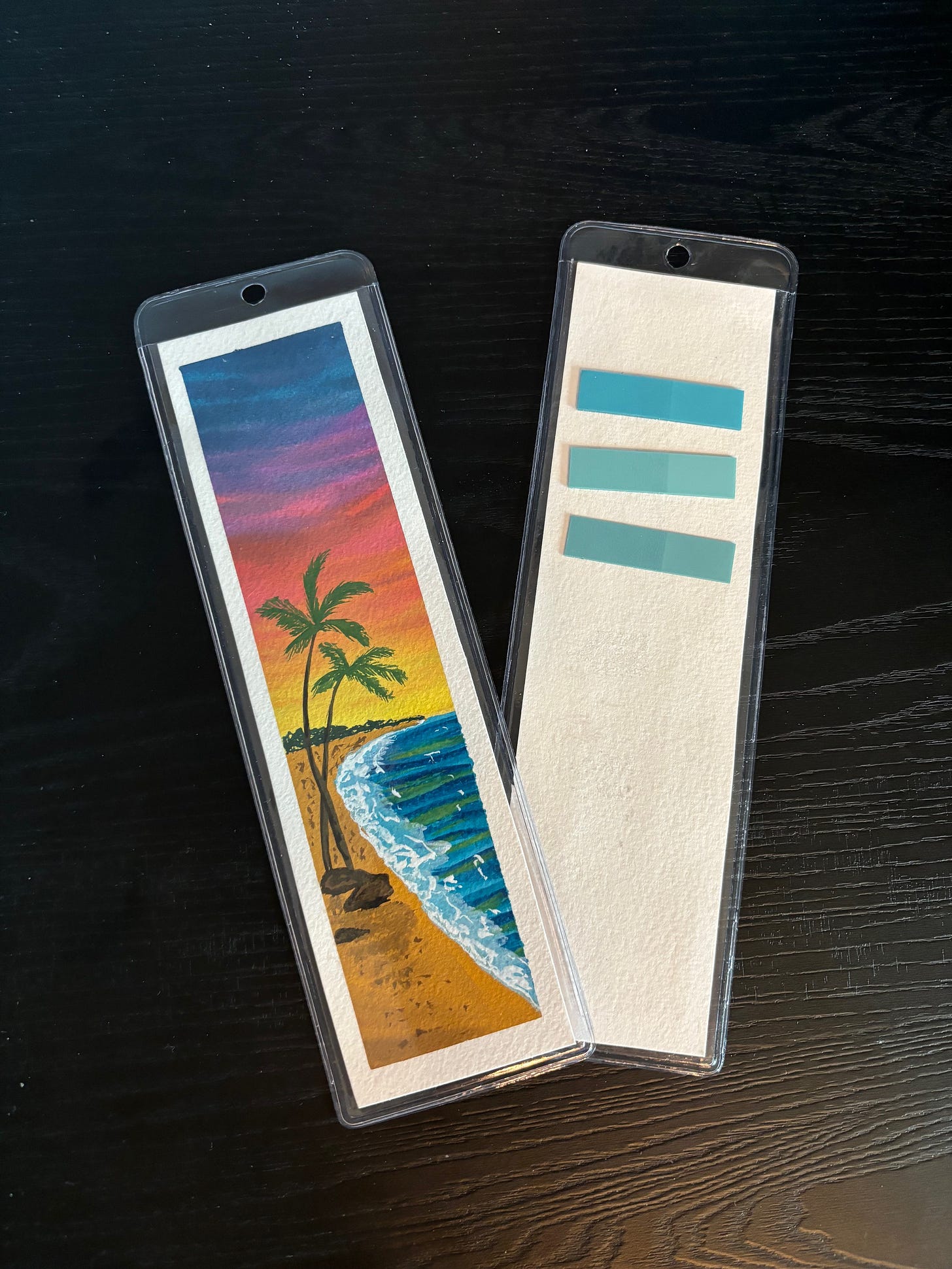
One other comment on page flags (did you ever dream there could be so many comments on page flags?!): A big reason I can read as many books as I do is because I pretty much always have a book with me. Extra waiting time at the doctor’s office or arriving to a meeting early? More time to read! I may not always have a highlighter or my study book at hand, but I nearly always have a bookmark in the book. I just put a bunch of page flags on it in advance so I have them at the ready, too. This makes annotating easy and possible wherever I am.
It also sometimes prompts interesting conversation - especially if there’s another book lover nearby!
And, to be fair, it may very well prompt some strange looks, too. Fortunately I’m probably too absorbed in my book to notice. :-)
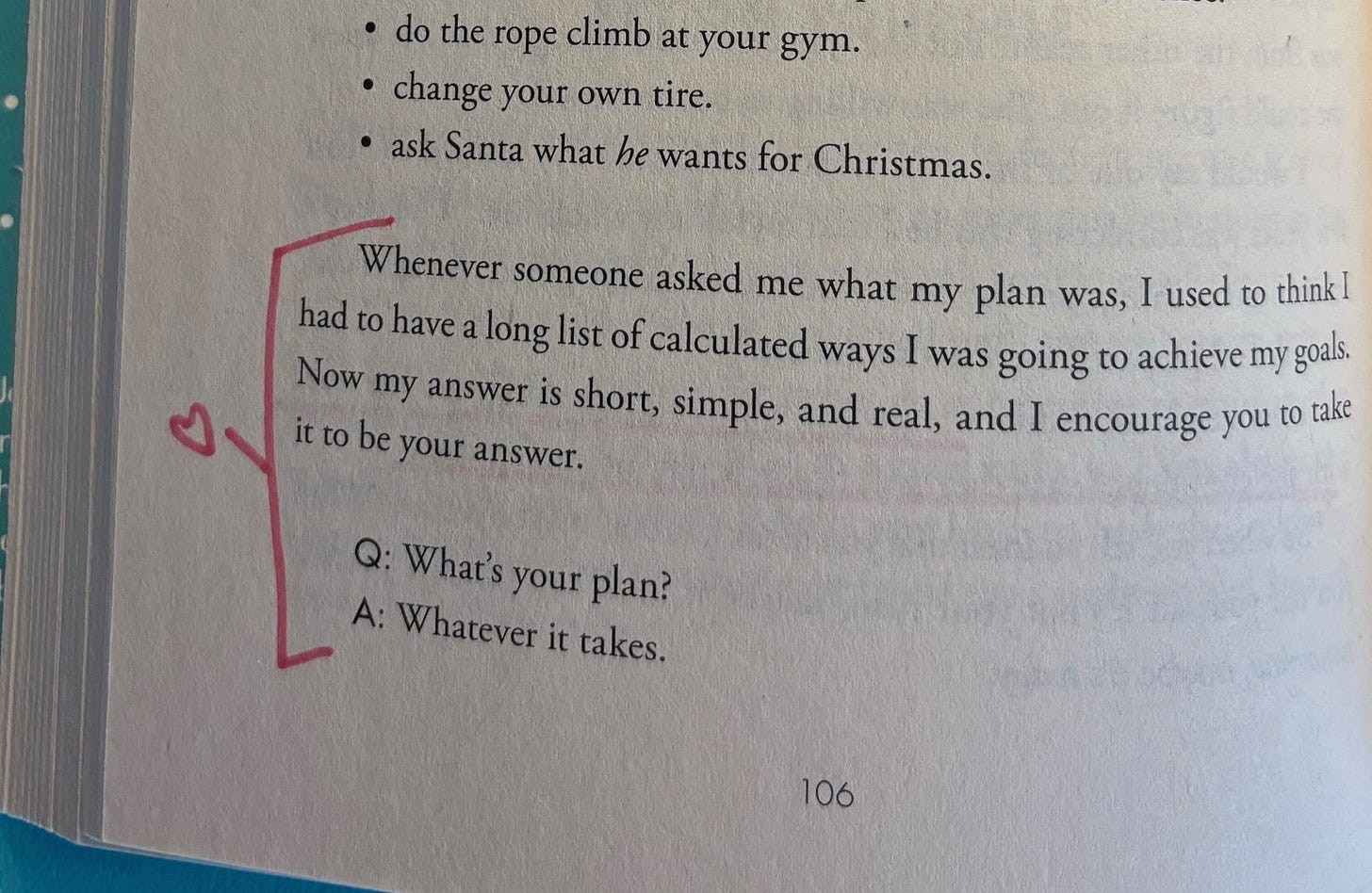
Highlighters, Pens, And Other Magical Writing Utensils
Now for a few details specifically about writing and highlighting along the way. I’ll keep this part brief, but a handful of ideas you might find useful:
If your highlighter is too dark or you find it difficult or distracting to read through, try using it as an underlining tool instead. Mildliners (my fave highlighters) have a dual tip for purposes like this, but you can also just turn a standard chisel-point highlighter to the side for a similar effect.
If you have a longer segment you want to note, like a full paragraph or multiple paragraphs, highlighting or underlining each sentence of the entire section may feel a bit cluttered. In those instances, I find a simple bracket around the segment offers a bit cleaner look for the same purpose, like in the photo above.
If you don’t have a pen or pencil to make notes in the margins, try just using the slim part of your highlighter - like I did with the little heart above. (I do the same when I want to add a word or two, but in this case, the heart captured my sentiment just fine.)
If the book has a connected list of items spread out over several pages, I will include the item number in with my highlights. In the photo above, for example, The Monastic Philosophy is the first of four philosophies Cal Newport shares in this chapter of Deep Work, so you’ll see I wrote a #1 next to it (often I’ll note ‘1 of 4’ for further delineation). This notation signals to me when I come back to it later - and sometimes it’s years or decades later - that the item is one of a group.
If there is a key word being defined or a concept being described, consider circling or underlining it amidst the rest of your highlight, like I did in the above photo. That way, you are reminded at a glance exactly what the segment is about.
Random Notes To Self
As I mentioned in that earlier annotation article, sometimes I have a random thought about the book while reading that I want to capture, but it doesn’t really match a specific page or topic within the book. It might be an overall note about the tone or writing style, something I may want to include in a review or reading wrap-up, or just a general comment like ‘The footnotes in this book are hilarious!’ For this purpose, I like to place a larger sticky note on in the inside front cover and just jot down whatever, whenever. The photo above shows a visual example (and FYI, I just wrote about the book pictured, How To Carry What Can’t Be Fixed, last week; it will show up in my February reading wrap-up at the end of the month, too). It’s just nice to have secured there so I always know I have a space to write whatever comes to mind.
The eagle-eyed among you may notice that the sticky note is placed slightly higher than the book cover. I flip the note so the sticky side is on the bottom and a portion of the top peeks out over the top of the book. This provides a visual cue so a) I’m reminded it’s there (this is a somewhat newer part of my process), and b) I don’t forget to remove it before returning the book if it’s borrowed. (On a side note, I can’t tell you how many audiobooks I have returned before remembering that I had items bookmarked! Fortunately, I now have a reminder cue for that as well.)
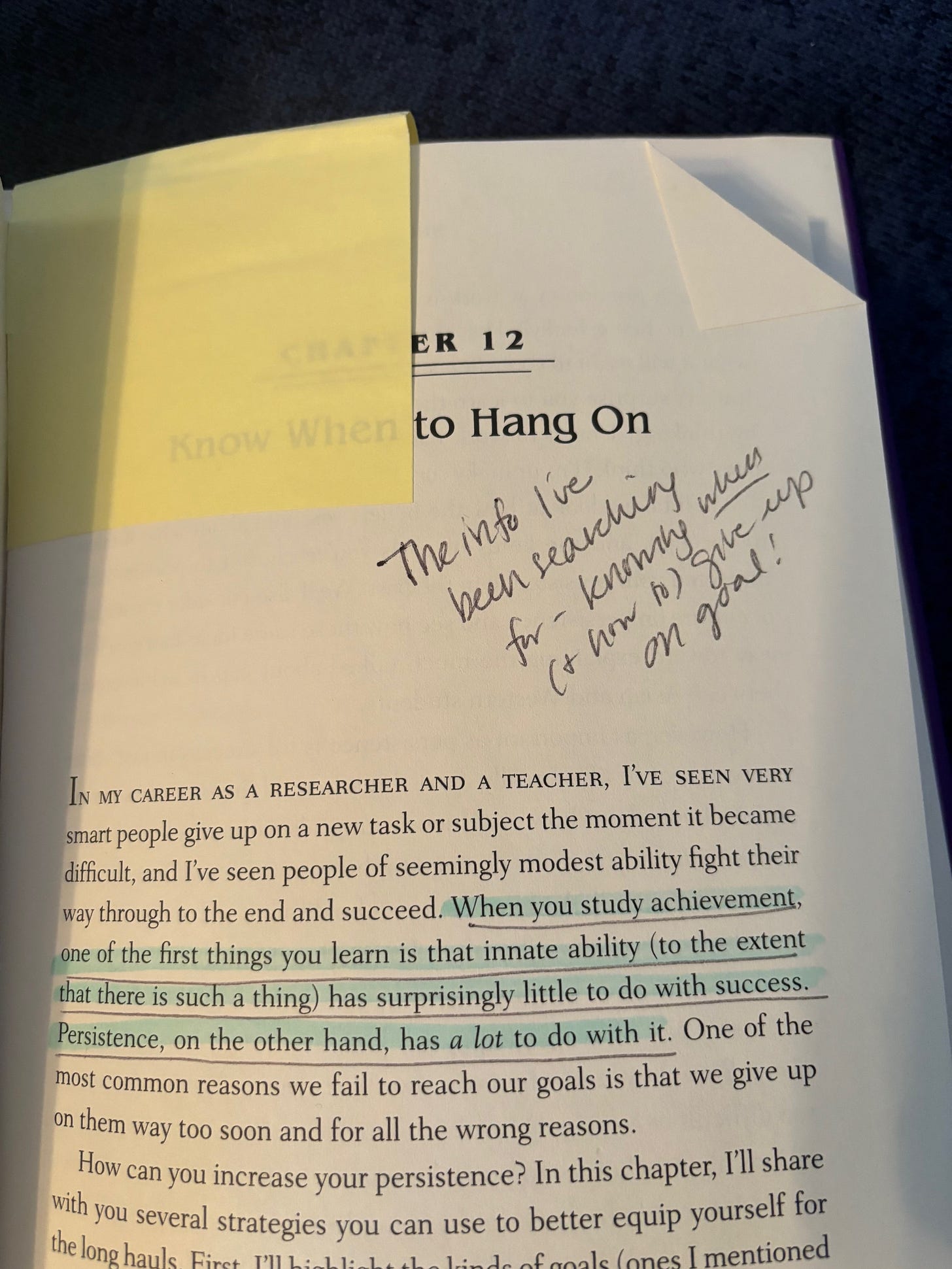
The End … ?
Surely, SURELY this is all I could possibly have to say about annotating?? I’d be surprised if a Part 3 appeared, but I’d also be absolutely delighted! So please let me know if you have further questions or want clarification on anything.
Do you find value in annotating? Do you write in the margins or do you prefer keeping your books in pristine condition? Have you discovered any cool tricks, tools, or techniques along the way in your annotating adventures? Feel free to share your annotating practices, aversions, concerns, or insights in the comments - it’s so fun chatting with you all!
Questions? Comments? Books or topics you’d like me to discuss here? Feel free to email me at readingandpurpose (at) gmail (dot) com or comment on this post directly in the app/website. I love hearing from you and I appreciate your support!


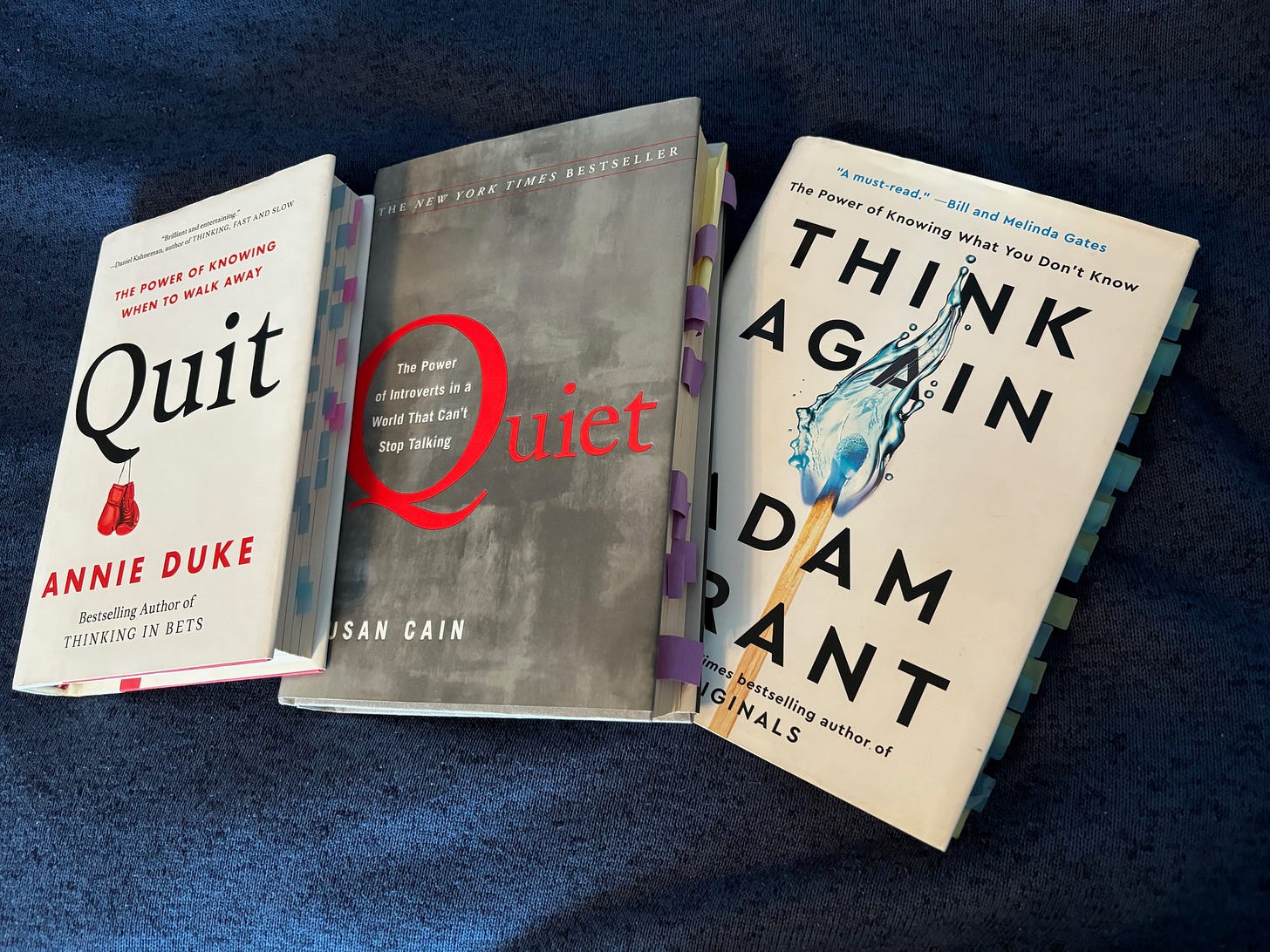
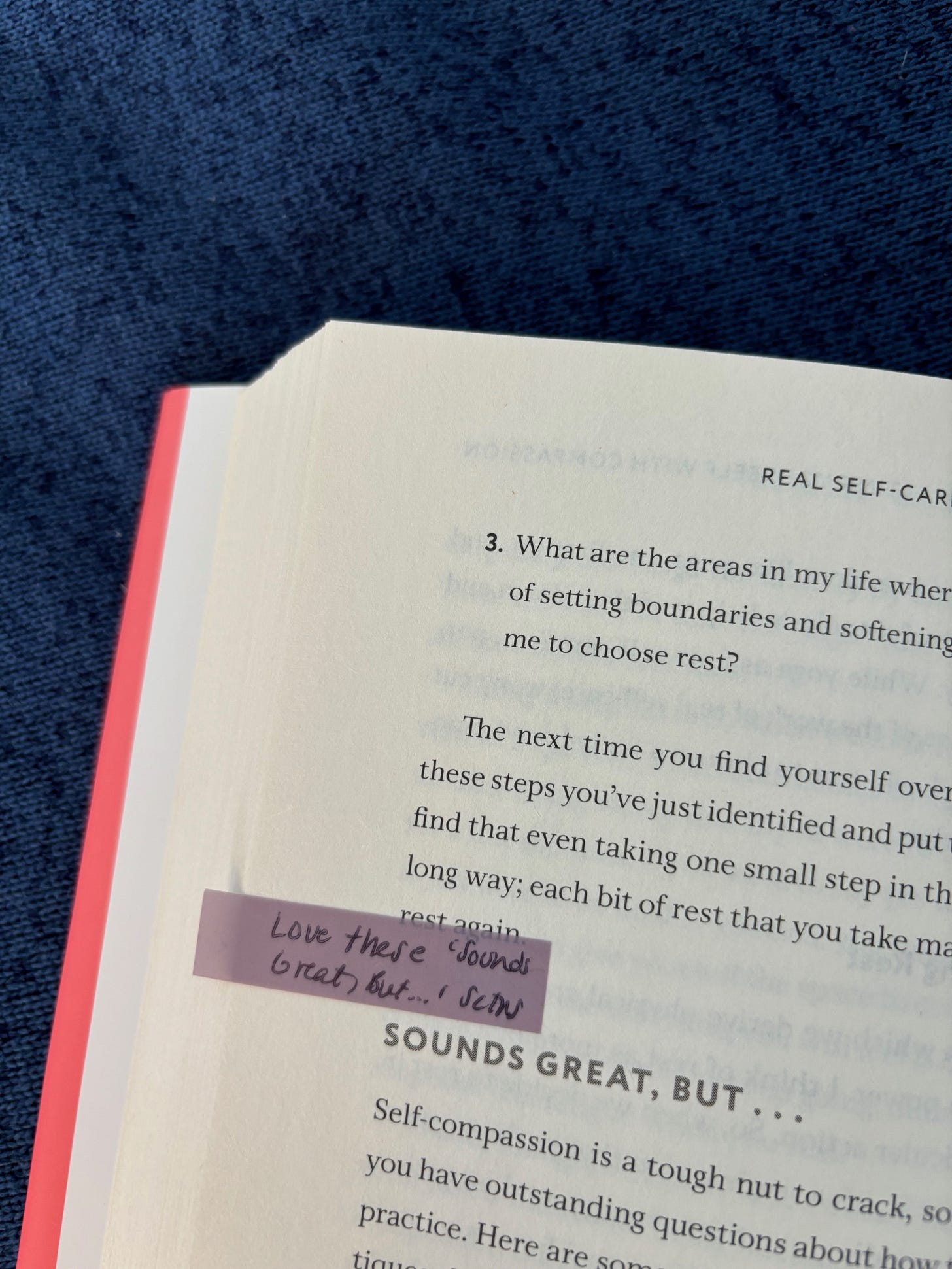
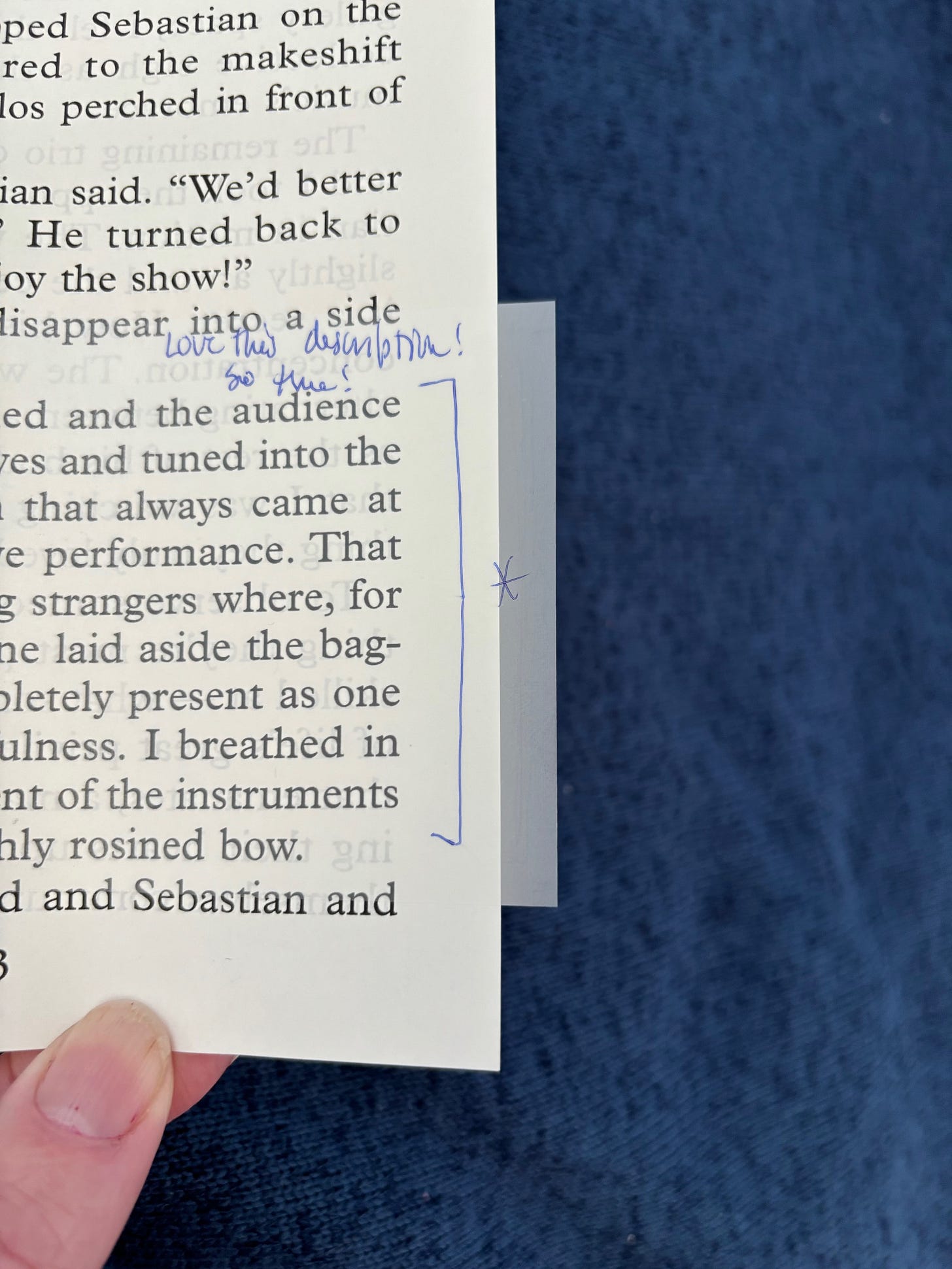

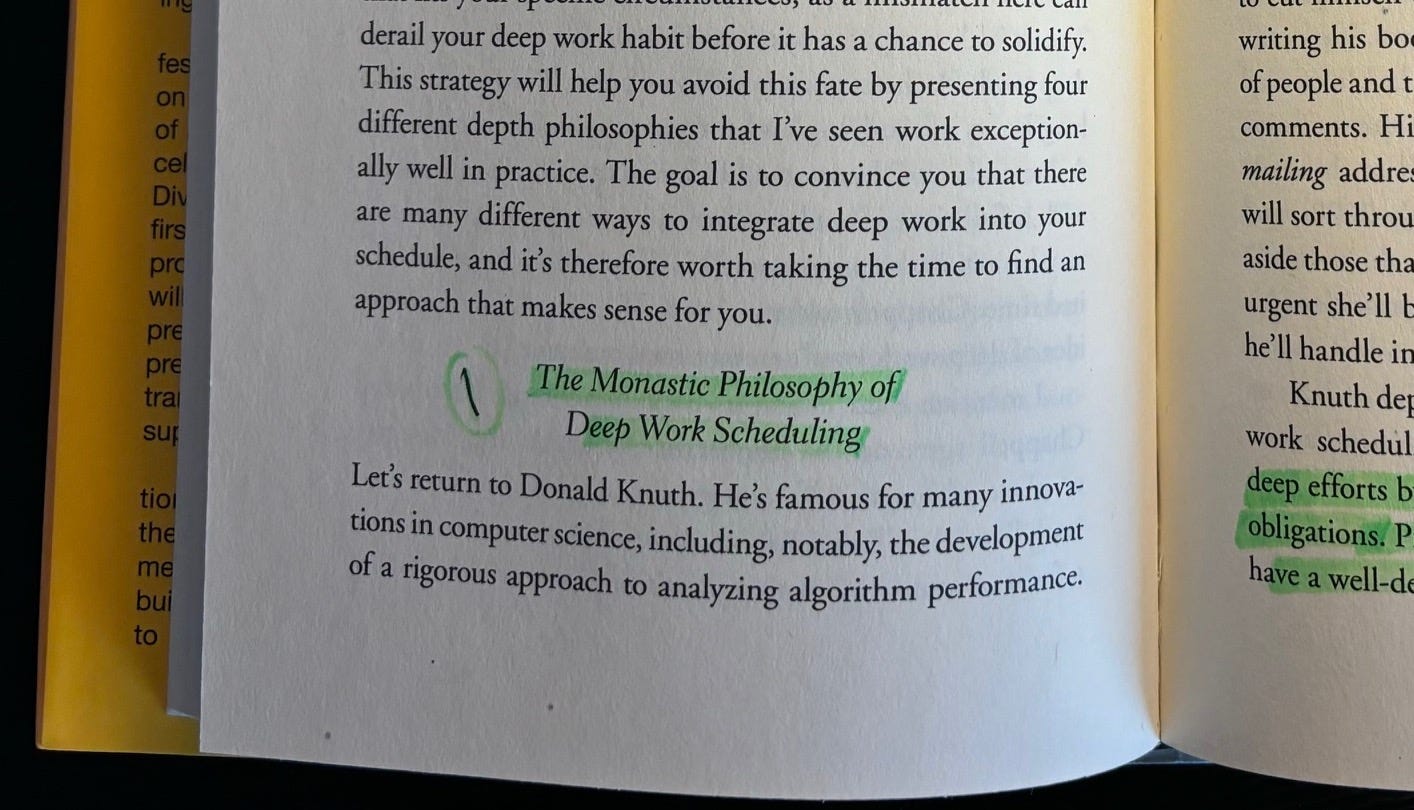
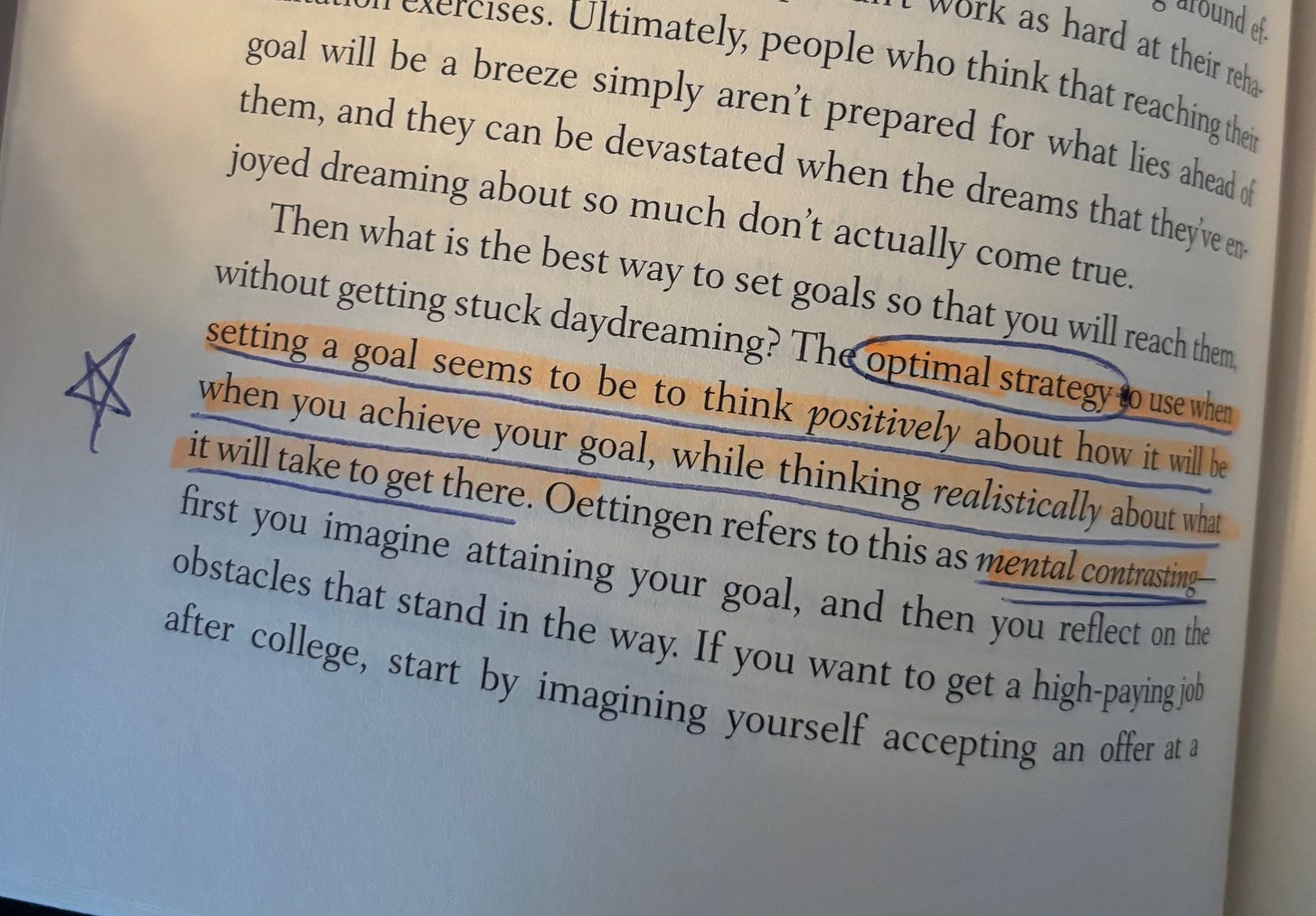

Writing on sticky notes and page flags is such a great idea!! I haven’t got a physical copy book (yet!) mainly because it takes up quite a lot of space and I’m love annotating on the e-version, it may sound silly but there aren’t enough colour options for highlighting. And sometimes I just don’t feel like writing things on a physical book! Definitely gonna try these tricks once I got a physical copy!!
found this just in time plan to start annotate! do u prefer to read first the book and then re-read and annotating it or just read it once and directly annotate it?